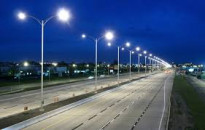Delimitations ‘undermine principle of equal suffrage’
FAFEN says one-fifth of constituencies exceed 10% population variation

The Free and Fair Election Network (Fafen) on Saturday observed that more than one-fifth of the constituencies exceeded the 10% population variation, as proposed by the Election Commission of Pakistan (ECP) in its draft delimitation, undermining the principle of equal suffrage upheld by parliament through the latest amendments to the Elections Act, 2017.
In a statement, the non-profit NGO added that the commission’s proposed 180 constituencies of the national and provincial assemblies did not meet the legal desirability of 10% variation in population.
“According to the amendments enacted on Aug 4, 2023, after the parliamentary approval, the Election Commission was expected to disregard district boundaries to ensure that the variation among the population of an assembly’s constituencies does not ordinarily exceed 10%,” the body that oversees the electoral process maintained.
“This variation among the population of constituencies may be identified by comparing the population of a constituency with the average population per seat of an assembly, also called quota per seat,” it added.
Fafen explained that the quota was calculated by dividing the population of a province, as determined by the last census officially published, by the number of its seats in national or provincial assemblies, as provided in the Constitution.
The quota for each National Assembly constituency for Khyber-Pakhtunkhwa was calculated at 907,913, Islamabad Capital Territory at 787,954, Punjab at 905,595, Sindh at 913,052, and Balochistan at 930,900.
Likewise, the provincial assembly seat quota for K-P was established at 355,270, Punjab at 429,929, Sindh 428,432 and Balochistan 292,047.
“An analysis of the preliminary report of delimitation 2023 and draft lists of constituencies reflects that the parliamentary emphasis on minimising the population variation was not extensively used to ensure the equality of votes in constituencies of an assembly," the statement read.
The NGO noted that the recently added provision in the law was only employed in delimiting 11 NA constituencies — six in K-P, three in Punjab, and two in Sindh — and one Punjab Assembly constituency.
It continued that as a result, the number of constituencies with more than 10% variation in population hit 180 – 83 NA and 97 PA seats – in the 2023 draft lists of constituencies.
In comparison, the number of constituencies with more than 10% variation in population stood at 170 – 82 NA and 88 PA seats – in the 2022 delimitation.
Fafen maintained that this meant that more than one-fifth of the total constituencies demarcated did not comply with Section 20 (3) of the Elections Act, 2017.
It added that the proposed NA constituencies with more than 10% population variation included 35 constituencies in Punjab, 22 in Sindh, 21 in K-P, and five in Balochistan.
Similarly, the PA constituencies included 30 in K-P, 26 in Punjab, 25 in Balochistan and 16 in Sindh.
Fafen believed that the issue of inequality of population among the constituencies of an assembly had persisted as the ECP did not update Rules 10 (4) and 10 (5) of the Election Rules, 2017 to reflect the spirit of Section 20(3) provisioned by the recent amendment that read: “It shall not be necessary to strictly adhere to the existing district boundaries in exceptional cases.”
However, it noted that a proviso under Rule 10 (5) of the Elections Rules, 2017 allowed the ECP to calculate the quota by dividing the total population of a district by the number of seats allocated to it.
“As a result, the largest NA constituency NA-39 Bannu has a population of 1,357,890, which is nearly three times bigger than the smallest constituency, NA-1 Chitral Upper-cum-Chitral Lower with a population of 515,935,” it pointed out.
“Similarly, the largest proposed NA constituency in Punjab is NA-49 Attock-I with a population of 1,126,142, against the smallest NA-61 Jhelum-II having a population of 690,683,” the statement read.
In Sindh, NA-209 Sanghar-I was proposed to have a population of 1,172,516 in comparison with NA-221 Tando Muhammad Khan with 726,119, Fafen pointed out.
In Balochistan, NA-255 Sohbatpur-cum-Jaffarabad-cum-Usta Muhammad-cum-Nasirabad had a population of 1,124,567 against NA-261 Quetta-I with 799,886, it continued.
For the provincial assemblies, K-P’s largest constituency PK-93 Hangu (528,902) hosts almost three times the population of the smallest ones – PK-1 Upper Chitral (195,528).
Similarly, the largest provincial assembly constituency in Sindh, PS-75 Thatta-I has a population of 556,767 against 354,505 in PS-79 Jamshoro-II – the smallest one.
Punjab’s largest PA constituency, PP-177 Kasur-III has a population of 510,875 against 359,367 in the smallest one PP-84 Khushab-IV.
Read More: Fresh delimitation vital for true representation: ECP
In Balochistan, PB-51 Chaman is the largest constituency with a population of 466,218, which is two and a half times bigger than the smallest one – PB-23 Awaran with 178,958.
Fafen observed that such inequalities in the population of constituencies might potentially result in a greater number of representations by voters.
The NGO urged the ECP to enhance the voter-friendliness of the process of filing representations on the draft constituencies.
It maintained that currently, every voter seeking to file a representation on delimitation had to travel to Islamabad for its submission and subsequently for hearings at the ECP Secretariat, causing them to bear additional costs and efforts.
Read More: Tug of war: PPP, MQM still at odds over delimitation process
Fafen proposed that the ECP might consider allowing the submission of the representation at its district, regional, and provincial offices.
Similarly, it continued that the hearings of these representations could be arranged at the provincial level.
Fafen also urged the commission to direct the Pakistan Bureau of Statistics to promptly publish on its website the census block-wise data of population as under Rule 12(2), voters would require this information for filing representations.



















COMMENTS
Comments are moderated and generally will be posted if they are on-topic and not abusive.
For more information, please see our Comments FAQ